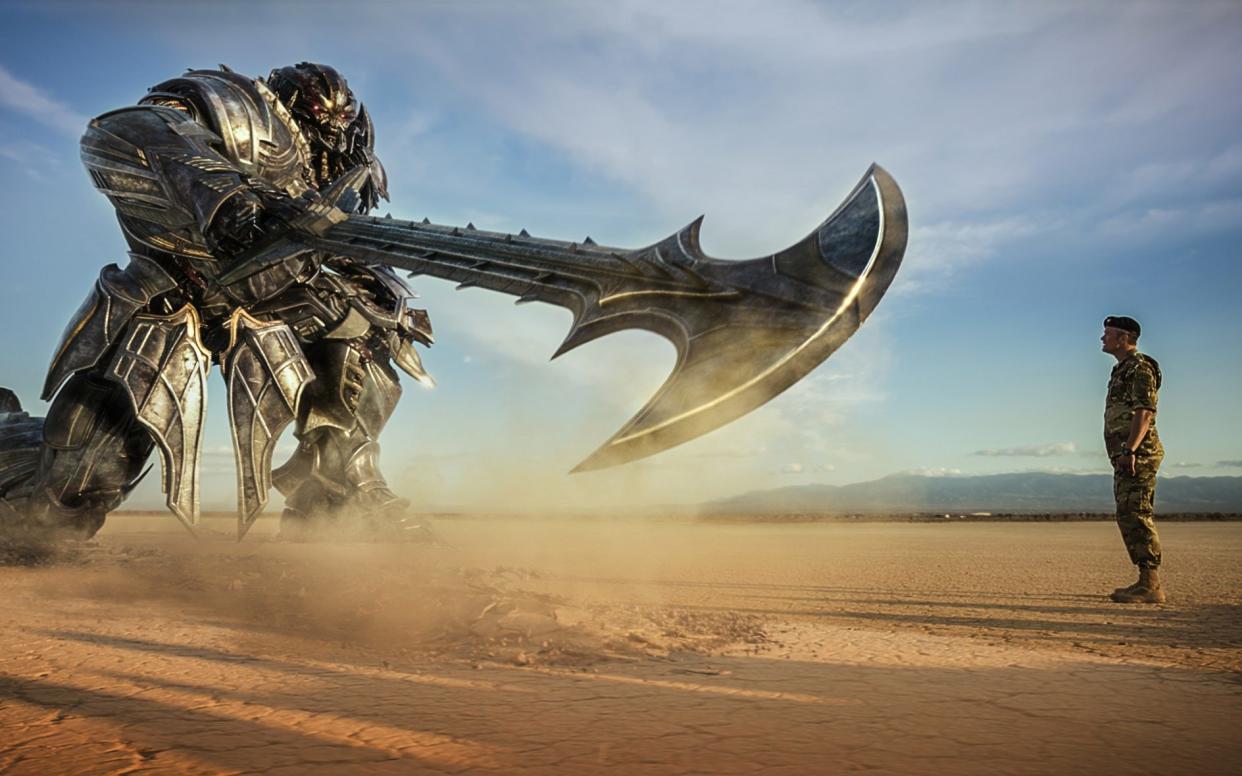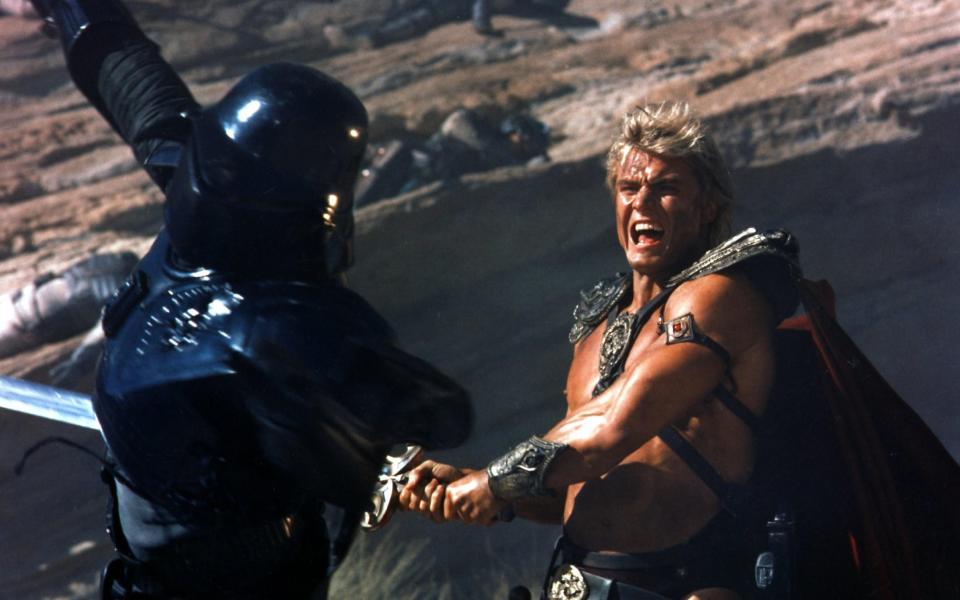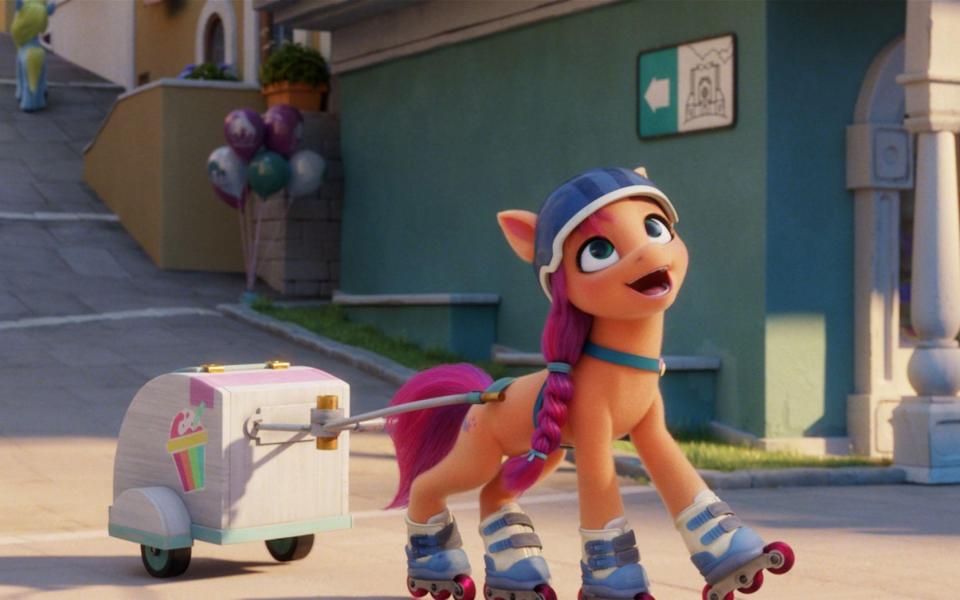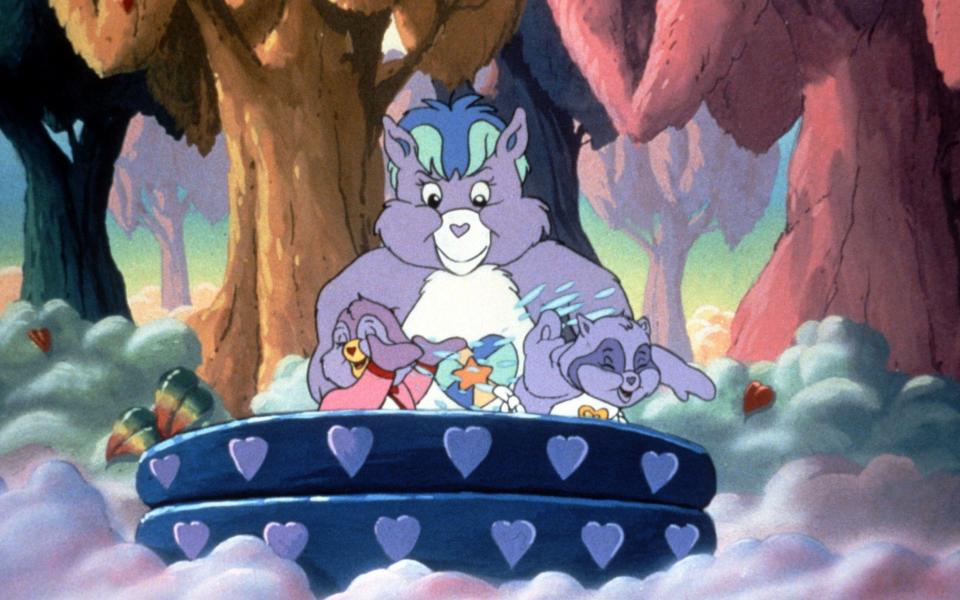Move over, Marvel – toys run Hollywood now

- Oops!Something went wrong.Please try again later.
- Oops!Something went wrong.Please try again later.
In a parallel universe somewhere, Hollywood looked at Greta Gerwig’s Barbie and decided that things had to change. Conclusive proof had arrived that the age of the franchise was now over. Audiences and awards voters alike craved raucous comedy and grand musical numbers, created by gorgeous stars and bold young directors with a deft, satirical touch.
Sounds nice, doesn’t it? Meanwhile back in our universe, Mattel Films announced last week that due to Barbie’s success, a big-budget remake of Bob the Builder was now on the way – with Jennifer Lopez, of all people, at the controls.
In the original CBBC stop-motion series, Bob, voiced by Neil Morrissey, was a chipper construction worker from Bobsville, whose catchphrase “Can we fix it? Yes we can!” summed up the show’s simple upbeat spirit. The forthcoming Lopez version, however, will reimagine Bob as Roberto, a Hispanic migrant worker who travels to Puerto Rico where he “takes on issues affecting the island and digs deeper into what it means to build”.
Mattel are promising a story which “celebrates the vibrant and colourful textures of the Caribbean Latin nations and their people,” though have yet to clarify whether Scoop the Digger has managed to secure the necessary visas.
In its first decade of existence, Mattel Films was just an ancillary wing of the toy firm – responsible for cheap-and-cheerful branded CG animations, mostly tied to the goth-themed doll brand Monster High. But emboldened by Barbie’s $1.4 billion global haul – and, to a lesser extent, its widespread critical acclaim too – they have heaved enough major toy-based movies into production to fill the next ten summers at least.

One of these, at least, feels inevitable: a second blockbuster take on He-Man and the Masters of the Universe, the musclebound fantasy range which in its 1980s heyday was essentially Barbie for boys. (What was Castle Grayskull if not a Dream House with a toothy portcullis?) And a couple of others certainly sound like movies that might exist: Rock ‘Em Sock ‘Em Robots starring the Fast & Furious series’ Vin Diesel, for instance, and Tom Hanks as the vintage astronaut doll Major Matt Mason. (Though you have to wonder how Toy Story’s Woody feels about that.)
Continue to scroll down the list, however, and we quickly arrive at the area marked ‘hmm’. For those who mostly loved Barbie but had quibbles about the scale, a Polly Pocket film is on the way, written and directed by Lena Dunham, and starring Lily Collins.
Star Wars director JJ Abrams is working on a Hot Wheels film, which is promised to be “grounded and gritty”. And over at Skydance, the presumably completely different Matchbox range of scale-model cars is getting a film of its own.
Beyond this point, free-associative lunacy awaits. A film based on Barney the Dinosaur, produced by the Get Out star Daniel Kaluuya, with an apparently Being John Malkovich-like plot. A film based on the card game Uno. A film inspired by View-Master stereoscopic goggles. A family-friendly thriller built around a Magic 8 Ball. To be clear, these are all real films currently in development.
Mattel’s own motive for this splurge is clear enough. There is a renewed hunger in Hollywood to find the new Marvel, now that last year’s box office suggests the old one is falling from grace. And the toy firm’s enormous trove of IP – that is, intellectual property; an industry term for existing pop-culture objects that can be converted into films – puts them in as good a position as anyone else to fill the gap.
In fact, their rivals Hasbro have been eyeing this vacancy for almost a decade. Ever since the rebooting of the GI Joe franchise in 2015, the company has been trying to engineer a cinematic universe of their own, in which the Joes can mingle with the shape-shifting Transformers, the spacefaring Micronauts, the Visionaries with their holographic torsos, the incognito warriors of M.A.S.K., and someone or thing called Rom the Spaceknight.
They came quite close last year, when a post-credits scene in Transformers: Rise of the Beasts inducted that film’s human hero into a GI Joe black ops unit. Alas, though, the film bombed everywhere but Peru, where it was partly set, and the market’s appetite remained unwhetted.

While the trend for toy-based films is a new one, the link between the two was made a century ago – inevitably by Walt Disney, who in 1929, during a chance encounter in a New York hotel lobby, struck a deal with a printing company to produce school notebooks with Mickey Mouse on the cover. Their popularity prompted Disney to sign a further contract the following year with a toy manufacturer to produce plush dolls and porcelain figurines based on the nascent studio’s cartoons. Again, sales soared, allowing Disney to plough a then-astronomical $2 million into the production of Snow White and the Seven Dwarfs. Thanks to toys, a motion picture empire was born.
It took a while for manufacturers to realise the equation worked both ways. At Mattel in the 1960s, a marketer called Bernard Loomis came up with the idea for a Hot Wheels cartoon series, which could be blasted every Saturday morning directly into their young customers’ eyeballs. The show was cancelled after two years, when US regulators decided it was so doused in branding that it technically qualified as advertising. But Loomis, who had seen the future, was just getting started.
At Kenner the following decade, he recognised that Star Wars – then still in production – was a toy-maker’s goldmine, and struck a wildly lucrative licensing deal with Lucasfilm and Twentieth Century Fox. Seething with envy as Kenner’s products flew off the shelves, Loomis’s ex-employers Mattel – who had turned down the Stars Wars licence – ordered their designers to come up with a rival range, also aimed at boys, with a cinematic sci-fi fantasy vibe. Enter He-Man, in an iron bondage harness and bearskin Speedos. Again, Mattel commissioned a cartoon series to help turn their creation into a craze, which thrived under the newly loosened broadcasting laws.

Transformers, My Little Pony, Care Bears: all of these were also toys first, cartoons second. Loomis even coined an adjective, ‘toyetic’, to describe a film’s ripeness for merchandising tie-ins. The late director Joel Schumacher once recalled hearing this word for the first time during the making of 1997’s Batman & Robin, as Warner Bros crammed the film with plasticky characters, vehicles and playset-like backdrops. Even for those making them, it was becoming increasingly hard to tell where the films ended and the products began.
Mattel’s post-Barbie spree takes this blurring to its logical conclusion. In the Plastic Cinematic Universe, everything is product: films are ads for toys whose fans will see the films then buy the toys they saw. Of course it’s perfectly possible that everything above will turn out as miraculously well as Barbie did, and in five years Magic 8 Ball: The Movie will be nominated for Best Picture. But as the 8 ball itself might say, don’t count on it.

